Indoor Training
As the days continue to shorten and temperatures fall, it can be difficult for a working-stiff to get out on a bike during the weekdays. Luckily there are options for those souls who want to stay fit during the winter. This article will examine several of those options and weigh their pros and cons.
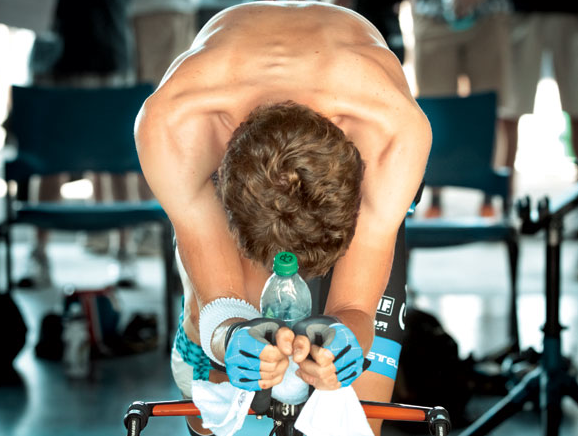
Regardless of which equipment you decide to use there are a few universal items you are going to want to have. Cycling inside means there is a lack of wind to evaporate your sweat so you need to be prepared for the waterfall of sweat that is sure to ensue. You should have a fan setup to provide some of that evaporative effect and a towel or two to wipe off the sweat. You may want to consider an extra towel placed underneath your bike to catch the sweat that falls and a headband to keep it out of your eyes. You are also going to want a TV and a good movie to watch, or at least some good music to listen too.
With that essential equipment lined up you are ready to consider the best indoor cycling option for yourself:
Trainer
This simple device works by propping your rear wheel off the ground while also providing resistance. It is easy to install your bike and get to riding. In addition to a trainer you are going to need a block of wood (or you can buy a special block) to raise your front wheel off the ground to the same height as your rear wheel so it doesn’t feel like you are perpetually riding down Mt. Lemmon. You also want to switch out that race tire for a cheap one because you’ll wear the rubber down. Make sure you pump your tires up to the tire’s limit (generally 120 psi). Trainers can vary in price and efficiency Below are several of the different options available if a trainer is the route you choose for your indoor training:
Mag Trainer
Pros: Less expensive, easy to use
Cons: Linear resistance curve means you need to manually increase resistance
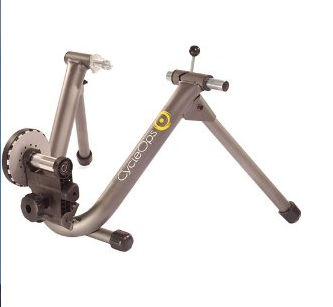
A magnetic trainer uses a strong magnetic to provide resistance to your wheel. This is a less expensive resistance unit but unfortunately the resistance it provides is linear. When you ride outside the resistance you generate comes from the wind which follows an exponential resistance curve. This simply means that if you want to ride harder you have to manual increase the resistance by either a switch on the resistance unit, or on slightly fancier ones, a switch you mount to your handlebar. It is simple enough to do and will provide more resistance than you could ever need. If you want a no-frills, cheap, easy-to-use indoor cycling option this is for you.
Wind Trainer
Pros: Less expensive, easy to use, simulates real-world resistance
Cons: Very noisy
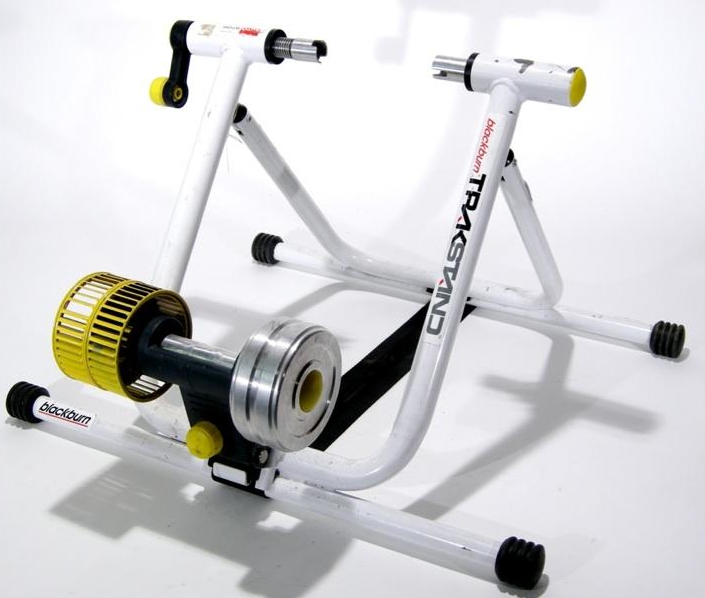
Just like it sounds, a wind trainer uses a fan to generate wind resistance. This is great because the resistance increases exponentially so there is no need to change the level of resistance. Simply ride faster and the resistance will increase. Unfortunately all that wind you create comes with a lot of noise so don’t consider this option if you have neighbors below you or you want to be able to hear that movie you are watching.
Fluid Trainer
Pros: Very smooth feeling, quiet, simulates real-world resistance
Cons: Price
A fluid trainer has fluid in a chamber to provide resistance. Like the wind trainer, the resistance provided is exponential so the faster you ride the harder the resistance becomes. These trainers are quiet, smooth and provide the most real-world feel. You’ll pay a bit more for it but if you are going to be spending some time on a trainer it is worth the extra price. I’ve tried several different brands and have found that the “Kinetic Road Machine” is head and shoulders above the rest.
Rollers
Pros: Helps improve cadence, pedal stroke, and balance, more entertaining
Cons: Steep learning curve, hard to ride for long periods of time
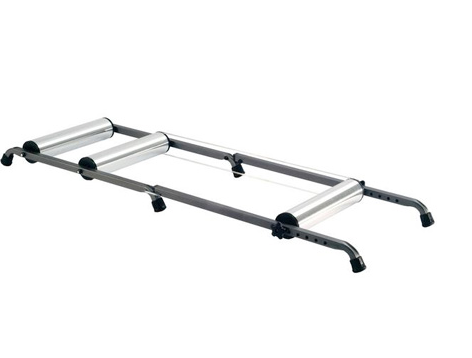
So you think you know how to ride a bike? Well, hop on a set of rollers and you might reevaluate that statement. These things are hard to ride on and it takes some practice to become competent. You’ll probably want to start in a door frame so you can stick your hand out to stop you from falling over. Once you get the hang of it though they are really fun and will help you increase your cadence and make each of your pedal strokes smooth. You really have to concentrate though and standing up is pretty difficult so it is hard to ride these for longer than an hour. It is also hard to do efforts on rollers because it is easy to fall off of them and most don’t provide enough resistance.
Spin Class
Pros: No need for equipment, extra motivation to go hard
Cons: Need a gym membership, don’t get to ride your personal bike, on a set schedule
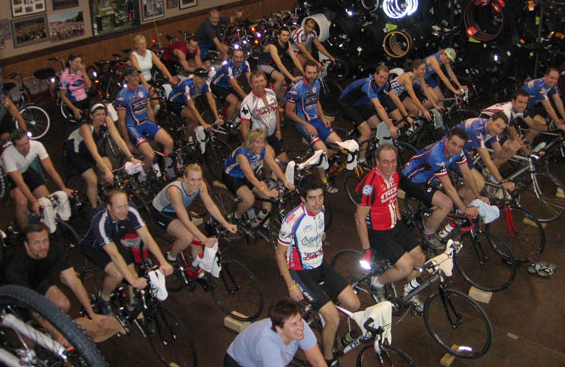
Maybe riding alone in your basement isn’t for you. Maybe you need the motivation of an instructor barking at you to get you to go hard. If that is the case consider spin classes. Spin classes generally have a higher intensity than what you would typically do in winter but recent scientific studies have indicated that if you have limited time to devote to cycling you can build fitness quicker by doing short, high-intensity intervals, like you’d find in a spin class, than doing a more traditional long slow ride.